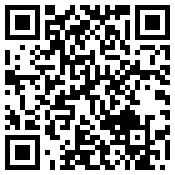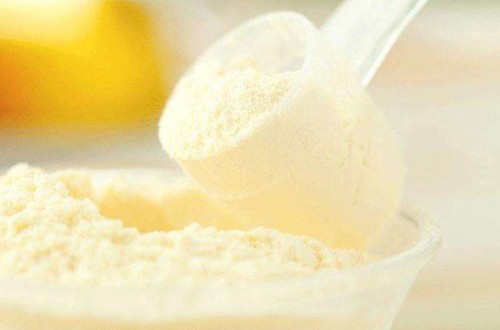INFS4203/7203 Assignment
Semester 2/2019
Marks: 100 marks (20%)
Due Date: 11th October 2019, 23:59
What to Submit: See deliverables part
Where to Submit: Electronic submission via blackboard
The goal of this project is to gain practical experience in applying clustering and
classification to real data. You must work on this project individually. The
standard academic honesty rules apply. You must use R for this project.
There are three main tasks: Data Preparation, Clustering, and Classification.
Please read the report carefully until the end. Since some parts of your code
require a random seed, you need to pre-set the seed for reproducible results. Your
seed value is the first 2 digits of your student ID. (For example: If your student ID
is 12345678 then the seed value will be = 12).
Dataset:
You will be using the “ILPD (Indian Liver Patient Dataset) Data Set” data1
. The
data has 583 observations (rows) and 11 attributes (columns). The attribute in the
last column is a binary class variable with value 1 for “patient” and 2 for
“non_patient”. You may find and learn more detailed information about the data in
the data description page2
.
1 Data Folder: https://archive.ics.uci.edu/ml/machine-learning-databases/00225/ .
2 Data Description:
https://archive.ics.uci.edu/ml/datasets/ILPD+(Indian+Liver+Patient+Dataset)
Task 1 - Data Preparation:
Write the necessary code to pre-process the data. That pre-processing stage
includes the following tasks:
1.1. Extract the data into an R data frame.
1.2. Assign the following names to the 11 different columns in your dataset
Column Number Column Name Meaning
1 Age Age of the patient
2 Gender Gender of the patient
3 TB Total Bilirubin
4 DB Direct Bilirubin
5 Alkphos Alkaline Phosphotase
6 Sgpt Alamine Aminotransferase
7 Sgot Aspartate Aminotransferase
8 TP Total Protiens
9 Albumin Albumin
10 AG_Ratio Albumin and Globulin Ratio
11 Class Indicator for patient and non_patient
1.3. There are some missing values in the column AG_RATIO, fill them with the
median of the column.
1.4. Replace all “2” in the “class” column with “0” to indicate “non_patient”.
1.5. Notice that R might define the Class column as integer. In that case, change
its type from integer to factor.
1.6. Save the dataframe into a file with filename ilpd_processed.Rda.
Task 2 - Clustering:
Apply K-Means and Hierarchical clustering to cluster the data as follows.
2.1. Load the preprocessed data file from Task 1 into a data frame. Please note
that in Task 2, we exclude Age, Gender, AG_Ratio, and Class attributes in this
task since they are in different units from the others.
2.2. Rescale the values of every column to the range of (0,1). Reference link3
.
2.3. Cluster the data into 2 clusters (i.e. k = 2) using K-Means clustering using
the default parameters for the function. Plot the results of the
clusters as a 2D plot where the x-axis is Alkphos and the y-axis is TP.
2.4. Plot another 2D plot with the same dimensions above, but color the points
according to the Class column.
2.5. Compare the 2 plots obtained in the previous two tasks (tasks 2.3. and 2.4.)
– do the clusters visually represent the vs classes?
2.6. Cluster the data into more than 2 clusters (i.e., k = 3, 4, 5) using K-Means
clustering and plot all the clustering results.
2.7. Compare the plots and Sum of Squared Error (SSE) obtained in the
previous task and provide your comments on the quality of clustering.
2.8. Apply hierarchical clustering to the data using the function with
default parameters and plot the corresponding dendrogram. Particularly,
cluster the dendrogram into 2, 3, 4, and 5 clusters and plot all of them.
2.9. Compare the plots obtained in the tasks 2.3., 2.4., 2.6. and 2.8. and provide
your observations on the achieved clusters - should we have a new subtype
of diseases?
2.10. Try different agglomeration methods in hierarchical clustering (i.e.,
). Plot the resulting dendrograms
and provide your comments on the quality of clustering - is the data
sensitive to the used agglomeration method? based on your results, what
do you think is the default agglomeration method used in Task 2.8.?
3 https://stackoverflow.com/a/15468888/6350054
Task 3 - Classification:
Apply binary classification using decision tree and K-NN techniques.
3.1. Load the preprocessed data file from Task 1 into data frame. Divide the
dataset into “training” and “test” subsets randomly (70% and 30%
respectively). We use all attributes in Task 3.
3.2. Learn a classification tree from the training data using the default
parameters of the function from the library. Plot that
classification tree and provide your comments on its structure (e.g., what
are the important/unimportant variables? Is there any knowledge we can
infer from the tree representation that helps in differentiating between the
classes?). Using the learned tree, predict the class labels of the test data.
Calculate the accuracy, precision, and recall.
3.3. Try building your classification tree again via the function but using
parameters that are different from the default settings. Can you achieve
better accuracy or more meaningful representation by tuning some
parameters? (Note that in the function from library, you can
modifiy parameters. Execute form RStudio Console for
the detailed documentation.)
3.4 Apply K-NN classification to predict the labels in the test subset and
calculate the accuracy, precision and recall. Particularly, try different values
of K (e.g. K = 1, 2, 3, 4, 5), and report your observations on the achieved
classification.
Deliverables: R project with your student number as the project’s name (e.g.
12345678.Rproj). The project should have the following folders and files inside the
folders:
1) Folder - Code:
● : Code to complete Task 1.
● : Code to complete Task 2.
● : Code to complete Task 3.
Provide the appropriate header in each file (your identity and file description) and
give meaningful comments in the script.
2) Folder - data:
● : orgininal dataset.
● : preprocessed data output from Task 1.
3) Folder - Plot:
● All plots in jpg format generated in Tasks 2.3., 2.4., 2.6., 2.8., 2.10.,
3.2. and 3.3.
4) Report: your report should include the following:
● Brief description for the main functions in your source code and any
assumptions or special settings of those functions.
● Plots, evaluations, and your comments on the observed results.
Please note that your preprocessed data, plots, and results should be
reproducible. That is, we can delete them and be able to generate them by running
your code. Hence, remember to set the seed before any function that requires a
random value. That seed is the first 2 digits of your student number.
Marking: Your total mark earned for this assignment is based on:
● Report: accurate statistics and clear presentation;
● Code and reproducible results.
● Demo: one-on-one demo presentation, if needed.
Submit one archive (zip) file with your student number as the file name (e.g.
12345678.zip) with all the files and folders mentioned above. The project is due
11th October 2019, 23:59. The submission is done through the BlackBoard and
no late submission is allowed.
因为专业,所以值得信赖。如有需要,请加QQ:99515681或邮箱:99515681@qq.com
微信:codehelp










